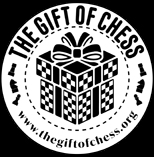 Chess 03 Jul 1943, Sat The Minneapolis Star (Minneapolis, Minnesota) Newspapers.com
Chess 03 Jul 1943, Sat The Minneapolis Star (Minneapolis, Minnesota) Newspapers.com
Pawn Pusher by O. A. Holt, Willmar, Minn.
J. B. Stiles, Minnesota checker master, sends interesting news from Chicago.
Apparently there will be no national checker tourney for the duration. All the ranking New York players are in the armed forces or war work with the exception of Willie Ryan and Kenneth Grover. Both are class 1-A and awaiting call from Uncle Sam any day. Chicago has perhaps the strongest contingent of players in the country as of today. Besides Stiles, there is Bobby Martin, several times Iowa champion and present Illinois champion whom Stiles rates with the first 10 or 15 of the nation. Then there Is Gene Winters, Roy Hunt, Jack Reese, John Peteck, Paddy Whalen, among Poran, among the nation''s first 30. J. T. Danvirs, P. Doran, A. Mann, O'Brien and others have passed their zenith but still are experts. L. M. Lewis, a topnotcher, passed away several months ago from heart attack.
Stiles writes that he sees F. S. Hazard, former editor of the P. P., and Mr. Mow, well known to local chess players, almost every day. Says the Swedish Chess club boasts fine talent.
Stiles, who was in the navy in World War 1, has been turned down by the army for the third time and thus reclassified from 1-A to 4-H.
Here is a good game sent by J. B. Stiles from Chicago. You will like his annotations.
“SOUTER”
Drawn
Notes by J. B. Stiles: (A) Constitutes the souter, This development is strong for black. Observation tends to prove that an inconsistent defense by the second player almost invariably lends to capitulation.
(B) Text best. This is the safest and most restrictive defense at White's command.
(C) Improves polished play! 17-14, 10-17 21-14, 8-10, 14-9, 6-14, 13-9, etc., as shown in text books requires punctual precision on the part of white to avoid disaster.
SOLUTION TO PROBLEM
NO. 787 by N. GUTTMAN
Key: Bb3 (B-QN3).
Excellent key. The few variations are top-notch, especially noteworthy is the Q mate at h1.—F. G. Gardner.
Giving Black more leeway is an old trick, but not often as subtly evolved in a 2er.—“Personne.”
Good problem. Play somewhat limited. The unpinning of R by Black P allowing R to mate by allowing itself as a self-block is beautiful. R. C. Beito.
Pretty tuff for a 2er.—Dr. W. A. Heintzen.
Deceptive, but not up to Newman's high standard.—Joe Youngs.
Very good. N defense provides a nice self-block and a rather profound mating move. KP variation is good, too.—Fred Stoppel.
Good, though we have seen still better by this author.—J. M.
First of Guttman's I have solved in months.—S. Sorenson.
W. C. Nolting sent the 3er below to your operative some months ago. It is the type of problem that any solver enjoys. I received a lot of enjoyment cracking the thing, though I'll admit it kept me up later the evening I solved it, than I expected it to. It is the type that gets under one's skin, and can't leave alone till she's solved. Dandy key, many, many close tries with the pesky Black N spoiling most, good variety, fine second moves, and rich play!
Re the problem appearing last Saturday, No. 789 by Aarhus; Aarhus writes the Pawn at g5 should be Black instead of White, so the number of pieces are, Black 9, White 10. Duals and a possible cook by QxB crop up if color of P is not changed. Solvers, kindly note!
C. A. Nelson, Minneapolis, inquires about the notation system used as many others have done. Below is an explanation which has appeared periodically in the past. (Note to Mr. N.: Problem chess is not subject to human error such as games. Play is forced against Black's best defensive moves. Bf3 will stop your try, Qf1, in 789.)
In the Continental notation system, used in solution to problems, the squares are designated by a letter and a number. The 8 files (vertical rows of squares) are designated by letter, a, b, c, … h reading from left to right. The 8 ranks (horizontal rows of squares) are designated by numbers, 1, 2, 3, … 8, reading from the White's side of the board which is always the bottom of diagram. Thus square a1 is White's QRsq or Black's QR8; e4 is White's K4, Black's K5; h7 is White's KR7 or Black's KR2, etc.
Forsythe notation is used below the diagram to check the position, and is a convenient method of recording any particular position. Start reading the board as you do a page of text. White pieces are designated by capital letters, Black by small letters, and empty or vacant squares by numerals.
PROBLEM NO. 790
By O. Duras
Black 7 Pieces
White 11 Pieces
FEN 5b1Q/p3Ppn1/p7/P6p/1P6/4PB2/3P1BP1/2K2kln.
White to play and mate in three moves.






















